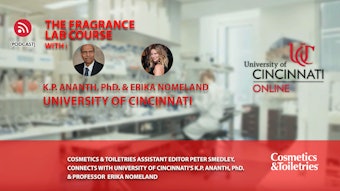Since the 1940s, it has been a common practice to curl or wave human hair with a reducing agent at a relatively high alkaline pH. The theory of this process is that the reducing agent severs the cystine (disulfi de) linkages in the keratin (hair) molecule, thereby permitting them to be reformed in new positions by an oxidizing agent after being wound around a mandrel or curling rod, thus causing a curl formation to occur.
This process has not changed in more than 60 years, but there have been different suggestions in the choice of reducing agents employed. By far, the reducing agent used the most is a suitable salt—thioglycolic acid, HS-CH2COOH. There have been other mercaptans—chemicals with a sulfhydryl (SH) group—suggested2 such as thiolactic acid, thiomalic acid, and β- mercaptopropionic acid; however, these 3 mercaptans are all highly malodorous, causing them to be rejected by the consumer as inelegant and nonaesthetic. For this reason, certain inorganic reducing agents have been proposed (e.g., ammonium bisulfi te and other bisulfite salts). Although these reducing agents have a lower inherent odor, they also have limited wave producing potentiality, thus making them unsuitable for universal use.










